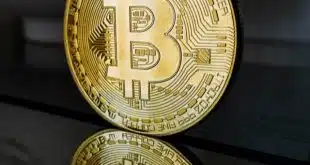Apple Inc. has been working on a payment card product with Goldman Sachs Group Inc. for at least a year, and on Monday the computer company that did much to put mobile payments on the map announced the results of that collaboration. Cobranded with Goldman and running on the Mastercard network, the Apple Card will debut this summer with features that have been separately available on other card products but are now tied together in one card, including cash rewards and no late, overlimit, or annual fees.
The card will also exploit Apple’s technology to offer enhanced security with unique account numbers for each of the cardholder’s Apple devices. A physical version of the product, made of titanium, will feature a chip but will omit such standard data as expiration dates and card-verification values.

Apple executives at the product’s unveiling Monday were clearly proud of their latest entry in the payment business. “It’s the most significant change in the credit card business in 50 years,” said Apple chief executive Tim Cook after details about the Apple Card had been presented by Jennifer Bailey, vice president for Apple Pay. Both executives spoke from Apple’s Steve Jobs Theater in Cupertino, Calif., during a presentation of a slew of new products and services.
Simultaneously, an email to employees from Goldman chairman and CEO David Solomon lauded the new product as “truly on the side of the customer.” Goldman has entered consumer financial services with its Marcus brand, which now claims $45 billion in deposits, $5 billion in loan balances, and more than 1.300 employees, according to Solomon’s memo, which Goldman released Monday afternoon.
But a big unanswered question about the new card is how financial institutions that have signed up over the past five years to support Apple Pay will react to the new Apple-Goldman entry, particularly since the card will depend on the same Apple Wallet that supports Apple Pay. Banks pay fees to Apple to have their cards included in that wallet.
While this scenario will play out as the new card penetrates the marketplace, some experts argue banks currently supporting the mobile-payment service will have a net incentive to stick with it. “Obviously it’s Apple competing with its Apple Pay issuers,” notes Rick Oglesby, principal at Mesa, Ariz.-based consultancy AZPayments Group. “But this is a sticky relationship [with cardholders].” Sticky, he adds, if for no other reason than that banks would have to notify and explain to each customer why it’s pulling out.
“It’s a competitor that has some advantages, being basically Apple,” he says. “But most of these banks got in a long time ago, and they’re in.”
Another question concerns technology. While the new card will clearly include a chip, as any new payment card now must, Apple’s presentation left unanswered whether it will offer contactless capability, if not from the start then at least in the near future. Also unclear is the fate of a card Apple already cobrands with Barclaycard.
But the Apple Card will clearly have a strong appeal with rewards-hungry consumers. Instead of points or other media, the card will simply return 2% of the total of all purchases on a given day in a program called “Daily Cash.” Purchases directly from Apple will earn 3%, but transactions on the physical card will fetch just 1%.
By offering a digital version, Apple will allow consumers to obtain and start using the card almost immediately across a range of Apple devices, including phones and watches. The Wallet app will track how much the user spends and where, and Apple will try to control customer-service costs by allowing users to ask questions via the company’s Messages service, “We have completely rethought the credit card.” Bailey said during Apple’s presentation.
The new card arrives as Apple continues to struggle to gain widespread acceptance for Apple Pay. While Apple doesn’t release official figures, eMarketer estimates Apple Pay will claim 24 million U.S. users by the end of 2019, up 9% from last year. That’s 39% of all consumers who use mobile payments, eMarketer estimates, but 11% of all U.S. smart-phone users.







